
The original opera house in Frankfurt is now the Alte Oper, a concert hall and former opera house in Frankfurt am Main, Germany. It was inaugurated in 1880 but destroyed by bombs in 1944. It was rebuilt, slowly, in the 1970s, opening again in 1981. Many important operas were performed for the first time in Frankfurt, including Carl Orff's Carmina Burana in 1937.

Weserstadion is a multi-purpose stadium in Bremen, Germany. The Weserstadion is scenically situated on the north bank of the Weser River and is surrounded by lush green parks. The city center is only about a kilometer away. It is the home stadium of German Bundesliga club Werder Bremen.

The Schauspiel Frankfurt is the municipal theatre company for plays in Frankfurt, Hesse, Germany. It is part of Städtische Bühnen Frankfurt.
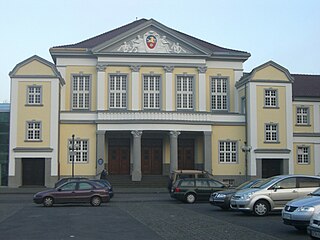
The Festhalle Viersen is a performance space in Viersen, a town located in the Lower Rhine region of Germany. It is well known for its theater and concert programme and is also the annual venue of the UMB World Three-cushion Championship of national teams as well as of the annual international Jazz Festival.

Theater Bremen is a state theatre in Bremen, Germany, with four divisions for opera, plays, dance, and student programs. Its venues are located in a city block, connected in architecture and seating up to 1,426 spectators. The theatre has drawn international attention since 1962 with innovative play productions in the Bremer Stil. Its opera company was selected as opera house of the year by Opernwelt in 2007.
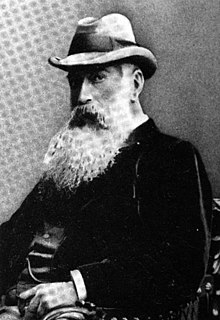
Johann Georg Poppe, often called Johannes Poppe by English-speaking writers, was a prominent architect in Bremen during the German Gründerzeit and an influential interior designer of ocean liners for Norddeutscher Lloyd. He worked in an eclectic mixture of historical revival styles sometimes called "Bremen Baroque".
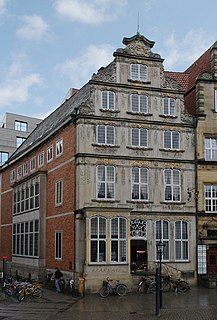
Haus der Stadtsparkasse is a Rococo landmark on the "Marktplatz" in Bremen, Germany. It was completed in the 1950s combining the historic front gable from another site with the more recent architecture of the remainder of the building.

The old Rathscafé, now named Deutsches Haus, is a listed building on the market place (Marktplatz) in Bremen, Germany. It is part of the monument ensemble No. 1–21.
The following is a timeline of the history of the city of Bremen, Germany.

The Kontorhaus am Markt in Bremen is a historical building in the city centre of Bremen, Germany. Today, it is used as a shopping mall. It is situated at the Bremer Marktplatz between three streets: Langenstrasse 2/8, Stintbruecke 1 and Bredenstrasse 13.
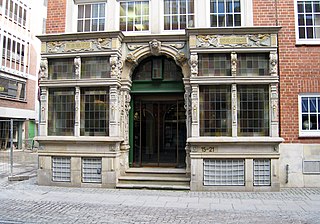
The Essighaus was an impressive gabled town house in the old town of Bremen in northern Germany. One of the city's finest examples of Renaissance architecture, it was almost completely destroyed by bombing in 1943. The entrance flanked by projecting bay windows is the only part of the building which has been restored.

Viertel is a centrally located neighborhood in the city of Bremen, Germany. It lies east of the old town on the border between two different administrative subdistricts: Ostertor and Steintor. Today it is known for its numerous cafés, restaurants, and boutique shops.

The Langenstraße is a historical street in the old town of Bremen in the north of Germany. First mentioned in 1234, it is one of Bremen's oldest streets and one of the most important for the city's merchants. It no doubt originated at the time when the first settlements grew up on the north bank of the Balge. It runs west from the Marktplatz parallel to the River Weser over Bürgermeister-Smidt-Straße to Geeren. Many of the street's historic buildings were seriously damaged during aerial bombings in the Second World War but were carefully reconstructed in the postwar period.

The Deutsche Bank building on Domshof Square in the centre of Bremen, Germany, was completed in 1891 in a Historicist style by the architects Wilhelm Martens and Friedrich Wilhelm Rauschenberg.
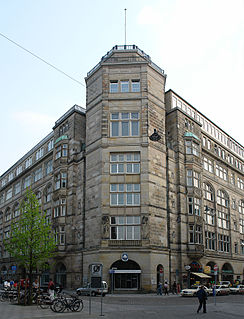
The Bremen Cotton Exchange was built in 1902 on the market square in Bremen, Germany, to house the offices of the city's cotton exchange founded in 1872. Johann Poppe's Neo-Renaissance facades and carefully finished interiors can still be seen today.
Pamela Knaack is a German television and stage actress.

Theatre Square is a large and historical place in downtown Bydgoszcz. On its borders stand many buildings registered on the Kuyavian-Pomeranian Voivodeship Heritage List.
Michael Simon is a German theatre director, opera director and scenic designer.
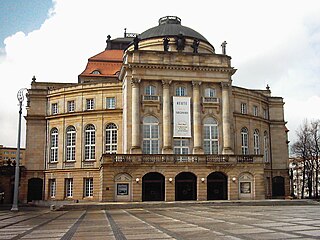
Theater Chemnitz is the municipal theatre organization of Chemnitz, Germany. Performances of opera, ballet, plays, symphonic concerts, and puppet theatre take place in its three main venues: the Opernhaus Chemnitz, the Stadthalle Chemnitz, and the Schauspielhaus Chemnitz. The award-winning opera company has produced a series of rarely performed works, and several German premieres. Its orchestra is named the Robert-Schumann-Philharmonie.

Städtischen Bühnen Frankfurt is the municipal theatre company of Frankfurt, the largest city of Hesse Germany. The name dates back to 1919. The company is structured today in two organisations, Oper Frankfurt for opera, and Schauspiel Frankfurt for drama (Schauspiel).
















